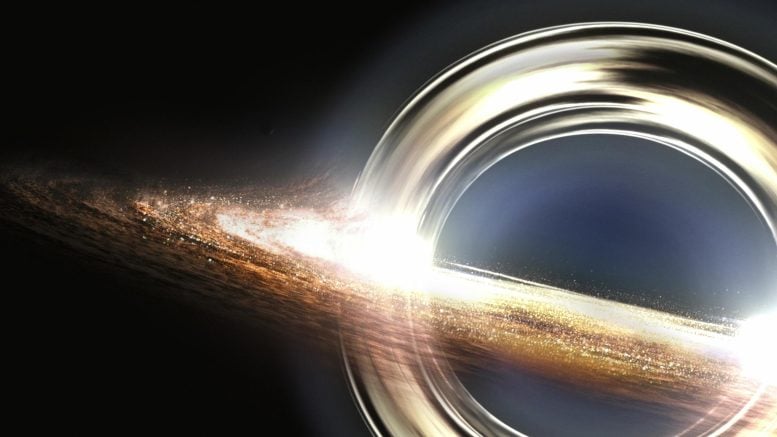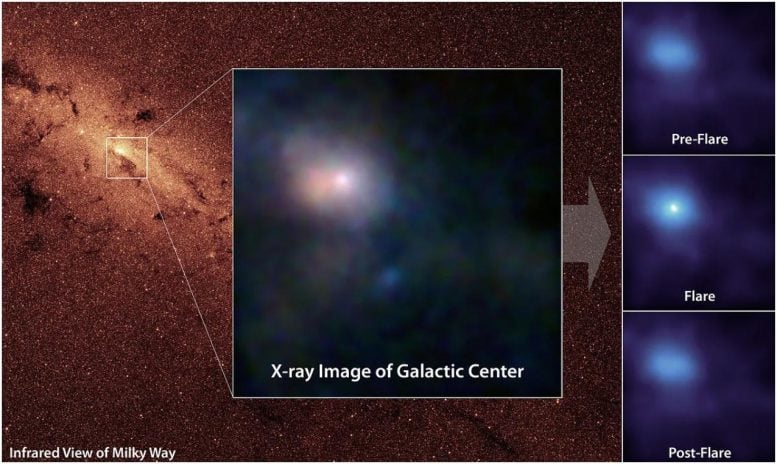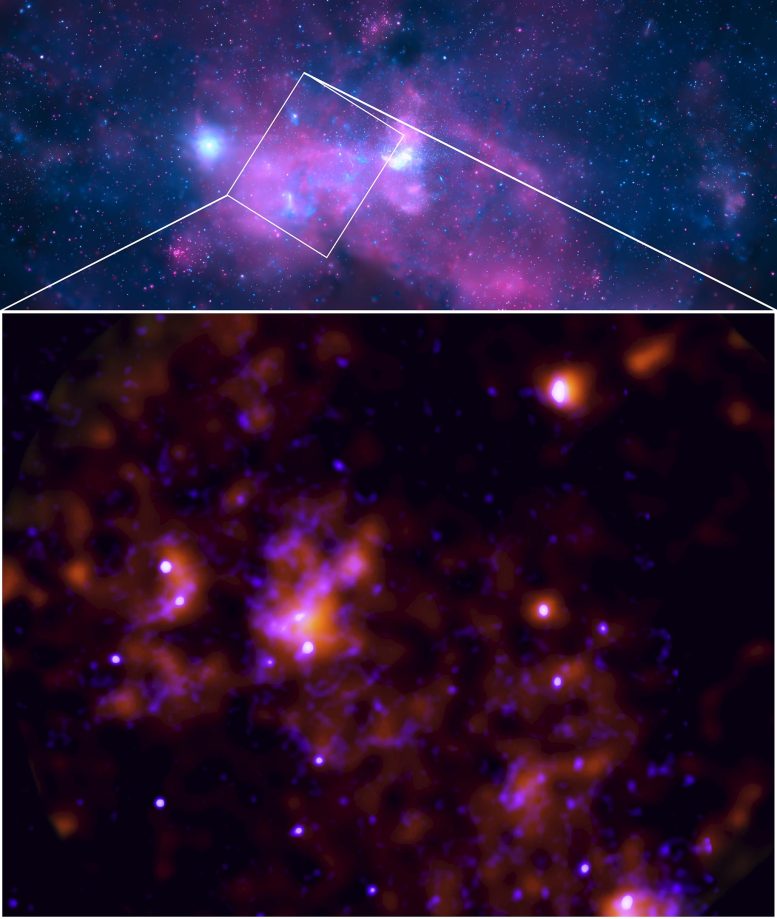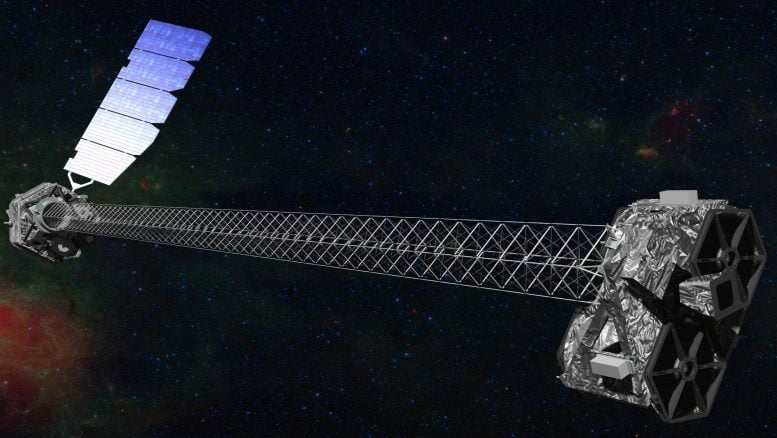
Scientists studied the past activity of Sagittarius A*, the supermassive black hole in our galaxy, by analyzing light echoes from x-ray flares, indicating frequent past material consumption and a historically brighter state.
The supermassive black hole at the heart of our Milky Way Galaxy is a quiet monster. However, Sagittarius A* (or Sgr A* for short) is not totally dormant. Occasionally it gobbles down a blob of molecular gas or even a star and then suffers a bit of indigestion. That emits x-ray flares to surrounding space.
Sgr A* is the closest supermassive black hole to Earth, at a distance of 26,000 light-years. Studying the nearby environment is tough due to the black hole’s intense gravitational pull. It distorts the view of nearby objects, making them difficult to observe. However, there are ways to do it by looking at the effect of its flares on nearby molecular clouds. Astronomers recently found the centuries-old echoes of previously unknown flares that occurred long before there were telescopes to observe them. Those echoes indicate that Sgr A* eats fairly often.

Grace Sanger-Johnson and Jack Uteg—two researchers from Michigan State University—studied the flares and their light-echoes in detail. What they found shows activity at Sgr A* in the very distant past when Sgr A* ingested material. X-ray emissions from that activity traveled for hundreds of years from Sgr A* to bounce off of and brighten a nearby molecular cloud. That created a light echo that traveled another roughly 26,000 years before reaching Earth. So, when Uteg and Sanger studied these flares and light echoes, they were literally looking into the past.
Searching for Sgr A* X-ray Flares With NuSTAR
Sanger-Johnson analyzed ten years’ worth of data looking for X-ray flares generated by Sgr A*’s eating habits. During the search, she found evidence for nine more such outbursts.
The flares are typically quite dramatic. Because they’re so bright, they provide astronomers a chance to study the immediate environment around the black hole. The data Sanger-Johnson studied came from the NuSTAR mission. It zeroes in on high-energy X-ray and gamma-ray emissions. These typically come from active regions in the hearts of galaxies, supernova explosions, and other active events.
The data Sanger-Johnson collected and analyzed is now a database of flares from Sgr A. “We hope that by building up this bank of data on Sgr A flares, we and other astronomers can analyze the properties of these X-ray flares and infer the physical conditions inside the extreme environment of the supermassive black hole,” Sanger-Johnson said.

Tracking the Echoes of Flares
While Sanger-Johnson was working with the NuSTAR data, undergraduate researcher Jack Uteg studied the activity around the black hole. He analyzed 20 years of data about a giant molecular cloud called “the Bridge.” The data came from observations made by NuSTAR and the European Space Agency’s XMM-Newton observatory. The Bridge lies close to Sgr A* and normally wouldn’t give off its own light.
So, astronomers took notice when it brightened up in X-rays, according to Uteg, who is constructing a timeline of Sgr A‘s past outbursts. “The brightness we see is most likely the delayed reflection of past X-ray outbursts from Sgr A,” he said. “We first observed an increase in luminosity around 2008. Then, for the next 12 years, X-ray signals from the Bridge continued to increase until it hit peak brightness in 2020.”
Uteg’s work helped astronomers determine that Sgr A* was about five orders of magnitude brighter in X-rays than it is now. That brightening indicates our central supermassive black hole had probably cannibalized a nearby gas cloud. And, the brightness revealed other properties, according to Uteg. “One of the main reasons we care about this cloud getting brighter is that it lets us constrain how bright the Sgr A* outburst was in the past,” he said.

What Those Light-Echoes From Sgr A* Reveal
Thanks to Sanger-Brown and Uteg’s work, astronomers have another way around the difficulties of observing around black holes. “Both flares and fireworks light up the darkness and help us observe things we wouldn’t normally be able to,” she said. “That’s why astronomers need to know when and where these flares occur, so they can study the black hole’s environment using that light.”
Astronomers know that the black hole does gobble up nearby material on a variable basis, but these findings help them constrain how often it happens and how the resulting flares affect the nearby neighborhood. Many questions remain about how often these flares occur and have happened in the past, according to MSU assistant professor Shuo Zhang, who acted as team lead for these two studies.
“This is the first time that we have constructed a 24-year-long variability for a molecular cloud surrounding our supermassive black hole that has reached its peak X-ray luminosity,” Zhang said. “It allows us to tell the past activity of Sgr A* from about 200 years ago. Our research team at MSU will continue this ‘astroarchaeology game’ to further unravel the mysteries of the Milky Way’s center.”
These results of the MSU team’s work were presented at the summer 2024 meeting of the American Astronomical Society.
Adapted from an article originally published on Universe Today.
For more on this discovery, see Unveiling the Monster Black Hole at Our Galaxy’s Core.